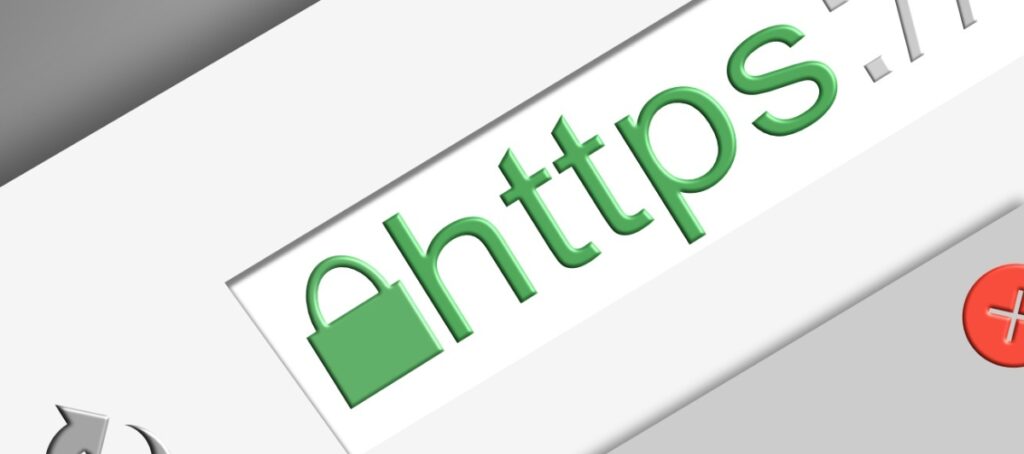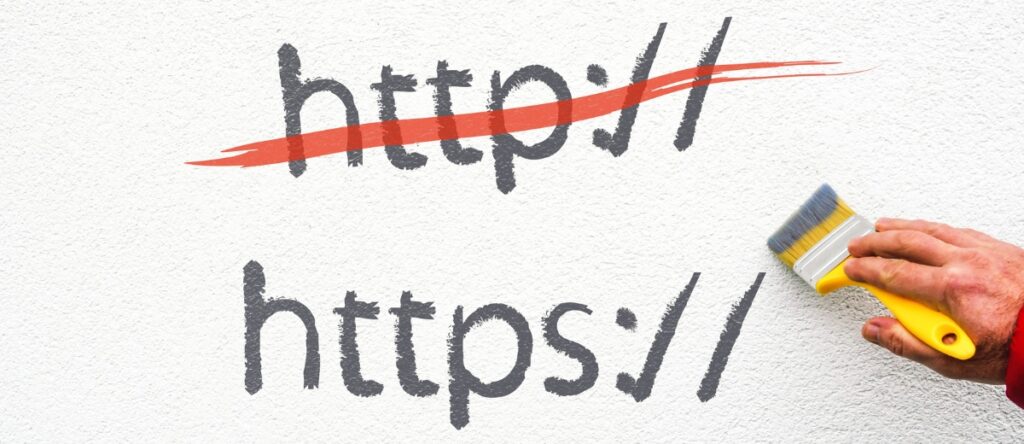Have you ever wondered how to effectively protect your website? With the rise of cyber threats, securing your data has become crucial. HTTPS has become indispensable for protecting your website and your visitors' information.
In this article, our SEO experts in Longueuil explain why HTTPS is important and how to install it easily. We will uncover what "https://" means and how this security protocol works. Additionally, you will see why the SSL protocol is essential for encrypting your data. We will guide you step-by-step, using simple examples so that even those with no knowledge of web security will easily understand.
This guide will show you how to secure your site to protect sensitive information and reassure your visitors. Ultimately, adopting HTTPS will strengthen your site's credibility and improve your SEO.
1. Understanding HTTPS in simple terms
1.1 What is HTTPS?
HTTPS stands for HyperText Transfer Protocol Secure. In other words, it’s a secure version of the HTTP protocol, which is the language that your browser and a website use to communicate. So, when you visit a site in HTTPS, all the information sent is encrypted. As a result, data is turned into a code that no one can understand if intercepted.
1.2 Explaining HTTPS to my grandmother
Imagine having a secret conversation with someone, using a secret code. No one else can understand because you're speaking in a secret language known only to the two of you. That’s exactly what HTTPS does—it secures your data exchanges.
- Data encryption :
Your browser and the site convert your information into a secret code. So, sensitive data like passwords or credit card numbers remain inaccessible to hackers. - Protection from spies :
Since no one can understand this code, your information remains private and secure. No one can intercept and decrypt what’s being sent.
In summary, HTTPS is like a conversation in a locked room. Only the people with the key, i.e., your browser and the site, can hear the conversation.
1.3 The role of https://
The "https://" you see in a website’s URL indicates that the connection is secure. This means the site protects your personal information and prevents hackers from intercepting your data. Moreover, the small lock icon displayed in the address bar is a trust symbol that shows the site adheres to security standards.
2. Exploring HTTPS and SSL
2.1 How does the HTTPS protocol work?
An HTTPS protocol is an enhanced version of HTTP that adds a layer of security. This security is provided by SSL/TLS. In other words, HTTPS uses SSL to encrypt all exchanged information. Therefore, your data is converted into a secret code, ensuring that it cannot be read or altered by malicious individuals during transfer.
To summarize, HTTPS protects your sensitive data, like passwords and payment information, by turning it into a code that only your browser and the website can decrypt.
2.2 Understanding the SSL protocol
SSL, which stands for Secure Sockets Layer, is the technology that secures the connection.
- Encryption : SSL turns your data into a code that only your browser and the website can decode.
- Authentification : It also verifies that the website is indeed what it claims to be, preventing phishing attempts or identity theft.
SSL plays a crucial role in establishing a reliable and secure connection.
2.3 From SSL to TLS
Over time, SSL evolved into TLS (Transport Layer Security), which is even more secure and faster. However, even though the term SSL is still widely used, most websites now use TLS to ensure better protection.
In summary, HTTPS relies on SSL/TLS to ensure your data remains private and secure.
3. Why use HTTPS on your site?
3.1 Protecting your visitors’ data
When a site uses HTTPS, all information such as passwords and payment data is encrypted. As a result, hackers cannot steal this data. Therefore, your visitors feel safe and can browse your site without fear. They can make purchases securely on your site.
3.2 Strengthening trust and brand image
A secure site inspires trust. Seeing "https://" and the lock icon in the address bar shows that you take security seriously. This reinforces your site's professional and reliable image, encouraging your visitors to interact and make purchases.

3.3 Improving your Google ranking
Google prefers secure sites. Therefore, using HTTPS can improve your ranking in search results. In fact, a better ranking attracts more traffic to your site, offering better conversion opportunities.
4. How to set up HTTPS on your site
4.1 Choose an SSL certificate
To enable HTTPS, you need to get an SSL certificate. Here are some options :
- Standard certificate : Sufficient for small sites or blogs.
- Extended certificate : For e-commerce sites or those handling sensitive information.
Many providers offer these certificates at different prices. Choose the one that fits your needs and budget.
4.2 Install and configure your certificate
Installing the SSL certificate is quite simple :
- Order the certificate from a recognized provider.
- Install it on your server by following the instructions.
- Configure your site to enforce HTTPS, which automatically redirects visitors from HTTP to HTTPS.
This ensures a consistent and secure browsing experience for all your visitors.
4.3 Test and verify your site’s security
Once the installation is done, it’s important to test your site. Use online tools to verify that the SSL certificate is properly installed and that all your pages are secure. Additionally, you can obtain an SSL certificate from a recognized certification authority, or opt for a free option like Let’s Encrypt. If you encounter issues, such as mixed content (some elements not switching to HTTPS), resolve them quickly. This way, you will provide a fully secure experience for your visitors.
5. Differences between HTTP and HTTPS
5.1 What is HTTP?
HTTP stands for HyperText Transfer Protocol. It is the basic protocol for transferring web pages. With HTTP, data is sent in clear text. Therefore, it is not encrypted, and anyone intercepting the communication can read the data.
5.2 Comparison in a few points
- Security :
- HTTP : Data is sent in clear text and can be intercepted.
- HTTPS : Data is encrypted, making it unreadable if intercepted.
- Authentification :
- HTTP : No identity verification is done.
- HTTPS : The site is authenticated using an SSL/TLS certificate, ensuring that you are communicating with the correct site.
- User trust : :
- HTTP : Visitors can see that the connection is not secure, which may discourage interaction or purchases.
- HTTPS : The lock icon and "https://" in the URL reassure users, boosting their trust.
- Impact on SEO : :
- HTTP : Non-secure sites may be penalized by search engines.
- HTTPS : Secure sites benefit from higher rankings, which can attract more traffic.
In summary, the main difference between HTTP and HTTPS lies in the level of security provided. HTTPS encrypts your data and ensures the site’s authenticity, whereas HTTP provides no protection, exposing your sensitive information to cyberattacks. Therefore, adopting HTTPS is a crucial step to secure your site and build trust with your visitors.

6. The Impact of HTTPS on your business
6.1 Improve your visitors’ experience
A secure site offers a better browsing experience.
- Visitors feel protected and are more likely to stay on your site.
- Safe browsing encourages visitors to spend more time and make purchases.
In other words, HTTPS improves user satisfaction.
6.2 Strengthen trust and your brand image
Your site’s security is a sign of seriousness to your customers.
- A site with HTTPS shows that you take their data protection seriously.
- This strengthens your brand image and encourages loyalty.
Ultimately, a secure site builds trust and can boost your sales.
6.3 Boost your SEO performance
Secure sites rank better with Google.
- HTTPS improves your ranking in search results.
- Better ranking attracts more organic visitors, which can increase your conversions.
Thus, adopting HTTPS is a winning strategy for your SEO.
7. Best practices for maintaining your security
7.1 Regularly update your system
To avoid security vulnerabilities, it is essential to update your site regularly.
- Update your content management system (CMS).
- Refresh your plugins and extensions.
These updates often fix security holes and improve your site's overall performance.
7.2 Train your team in best practices
Security doesn’t just depend on technology.
- Organize training for your team so they understand the basics of online security.
- Raise awareness about risks (like phishing emails).
A well-trained team greatly contributes to maintaining the security of your site.
7.3 Monitor your site continuously
It’s important to constantly monitor your site to detect any anomalies quickly.
- Use monitoring tools to track your site’s activity.
- Set up alerts that will notify you in case of a problem.
This vigilance allows you to react immediately in case of an attack or vulnerability.
Towards a secure and high-performing web future
Our guide demonstrates how HTTPS protects your site and your visitors. You’ve learned what HTTPS is and how it works with SSL/TLS. We’ve clearly explained why HTTPS secures your site and enhances its credibility. We’ve shown you how to obtain and install an SSL certificate and outlined best practices to maintain optimal security.
By adopting HTTPS, you provide your visitors with secure browsing. You strengthen your brand image and improve your SEO. With these simple tips, you ensure a secure and high-performing digital future for your business. Lastly, you boost your digital presence with The Webix.








